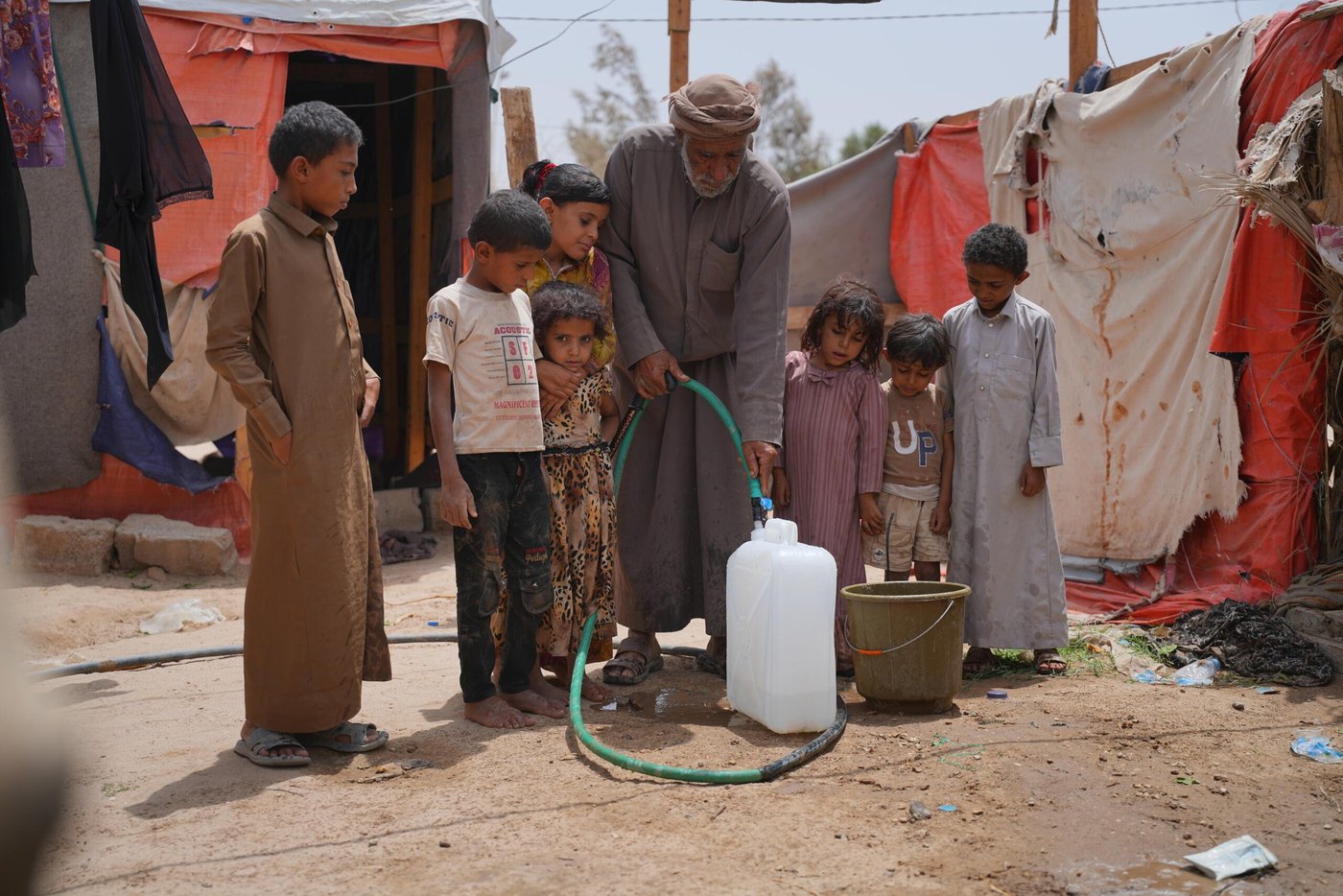While summer rains typically offer some relief, this year’s cumulative rainfall is expected to drop by 40 per cent in some regions, leaving 15 million people who are water insecure in a precarious state without safe drinking water or reliable sanitation.
“With every year that passes, Yemenis see their ability to access water shrink,” said Angelita Caredda, NRC’s Middle East and North Africa Regional Director. “Water is a lifeline – not only vital to drink but also to stay clean and healthy, to prevent the spread of disease, to water crops and to care for animals.
“Across the country, safe water is becoming ever scarcer. Yemenis need immediate assistance to avert this crisis turning into a catastrophe. Millions have to cut down on their meals and now they will have to grapple with shrinking access to water. Yemen faces a food and water emergency.”
NRC teams recorded soaring water trucking costs across Yemeni regions in recent weeks. For instance, in the southwestern city of Taiz, 1,000 litres of domestic water, used for washing and cooking, now costs 5 US Dollars - equivalent to a daily labourer’s wage. As an alternative, women and children have to walk long distances to fetch water, a journey fraught with risks.
Kudafah, a displaced mother in Abyan, east of Aden, said, “We have suffered a lot to get enough water. I used to walk for three kilometres to fetch a jerrycan of water from farms and carry it on my head. But the main problem was that it wasn’t potable water. The scene of the children falling from donkeys and breaking the jerrycans is stuck in my mind. One child spent hours fetching water and then lost it on the way back.”
Displaced communities also told NRC that more people are suffering from kidney diseases as they consume unsafe water.
To help people access clean water, NRC rehabilitated the main water well in in Gawl Al-Saddah camp Abyan governorate and provided the displacement camp in the area with water tanks, significantly improving access to clean water.
NRC has also intervened in other regions, including Marib, Taiz, and Amran, where the organisation installed elevated water tanks, repaired water sources, and set up solar energy systems for pumping water.
Ahmed, a displaced father in Marib, said, “No one can imagine the happiness of the children and adults when the water reached the camp. Now we have enough clean water, and refilling is no longer a burden.”
In 2024, NRC provided more than 50,000 people with access safe drinking water and sanitation services but as cuts to humanitarian funding materialise this work is under threat.
“The humanitarian community across Yemen is struggling to meet the scale of demand for clean and safe water. Just 10 per cent of the funding needed for water and sanitation work has been provided by donors so far this year, leaving many families without the support they need. Due to cuts to humanitarian funding by many major donors, we are deeply concerned these needs will continue to be unmet. Donors must act swiftly to reverse these cuts and enable Yemenis to access the most basic lifeline of all – safe water,” said Caredda.
Notes to editors:
- B-roll and photos can be downloaded for free use and distribution via this link.
- Cumulative rainfall is expected to reach up to 60mm in Ibb and Dhamar, which remains about 40% below the long-term average (FAO).
- In 2025, 19.5 million people in Yemen require humanitarian assistance. (OCHA)
- 15 million Yemenis are water insecure. (OCHA)
- NRC has been working in Yemen since 2012 to help families access essential services.
- In 2024, NRC provided 52,553 people access safe drinking water and sanitation services across Yemen.
- Food security in Yemen is projected to worsen between September 2025 and February 2026, with an estimated 18.1 million people expected to Crisis levels or worse (IPC).
- The Yemen Humanitarian Response Plan for 2025 is significantly underfunded, with 13% of the required $2.47 billion secured as of mid-July (OCHA Financial Tracking).
- Just 10% of the required funding for water and sanitation projects has been supplied this year (OCHA).
For information or to arrange an interview, please contact:
- Ahmed Bayram, Middle East media adviser: ahmed.bayram@nrc.no, +962 790 160 147
- NRC global media hotline: media@nrc.no, +47 905 62 329


